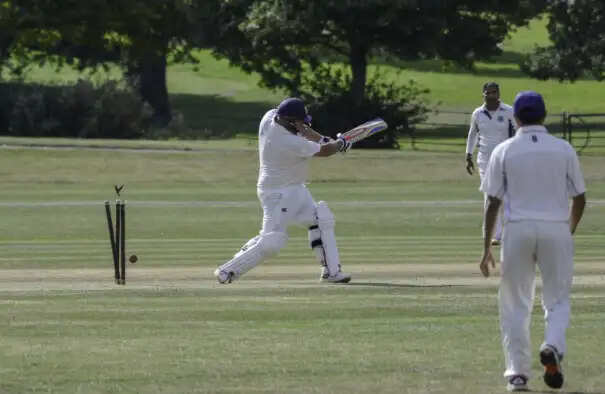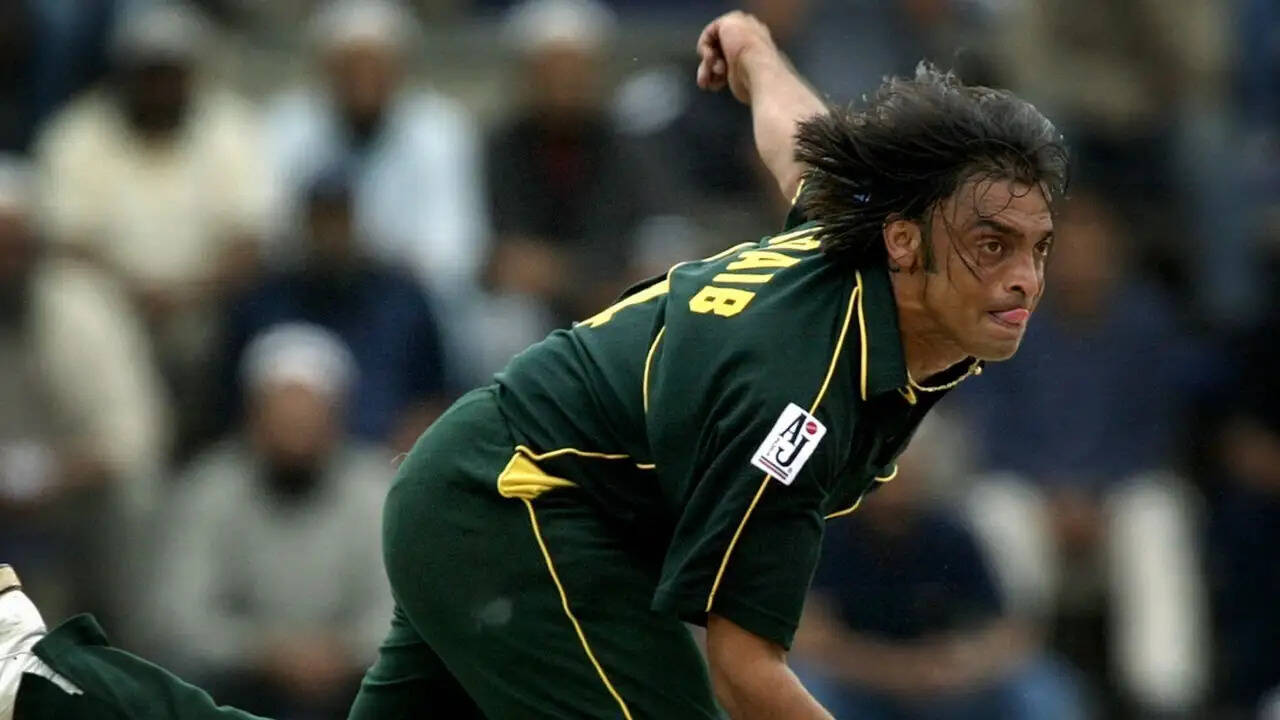The Science of Speed: How Fast Bowlers Push the Limits of Physics
April 17, 2025: A cricket ball races through the air at more than 150 kilometers per hour, smashing into the stumps or hitting the bat — nothing can beat that. Having a fast bowler throw the ball at those speeds is one of the most exciting experiences cricket has to offer. But how do bowlers get the ball to travel at such high speeds? Let’s take a look at the reality behind the noise and the physics behind the rapid-fire deliveries.
Perfecting the Run-Up
The run-up, or the sprint leading up to the actual bowling, marks the start of an effective delivery. A fast, rhythmic run-up helps pack energy that will be useful once the bowler releases the ball. The ‘Rawalpindi Express’ Shoaib Akhtar, who holds the record for the fastest delivery in cricket history at 161.3 km/h, had an approach of 23 meters that was as rhythmic as it was purposeful. Research indicates that between 15 and 20 percent of the bowler's pace is a product of the run-up speed.

However, it is not simply a case of running. Those who are interested in melbet know that the best fast bowlers have their strides timed so they reach the crease in a controlled fashion. A good example is Pat Cummins, who maintains an economically efficient and smooth run-up. His gather does not result in overstriding, and that improves the flow of energy from the legs to the torso, lowering the chance of injury while also improving accuracy. If the run-up is too fast or too short, the bowler is most likely to misdeliver the ball, and therefore, every bit of detail needs to be accounted for.
Speed Secrets: What Makes a Bowler Fast
Generating world-class pace isn’t magic — it’s physics, mechanics, and practice. So, what differentiates a bowler who can generate 140 km/h from a bowler who can effortlessly hit speeds of 155+ km/h? The answer rests in many factors working hand in hand. Let’s break it down:
- Shoulder Rotation: Brett Lee and other elite bowlers can rotate their shoulders 500 degrees per second while whipping the arm through with brutal force.
- Hip-Shoulder Separation: This X-Factor separation generates torque. The hips fire ahead while the upper body stays behind: elastic energy is being stored.
- Wrist Snap: The last essential flick adds critical speed, while Dale Steyn’s lethal wrist action gave him both pace and deadly outswing.
- Core Engagement: Strong abs tremendously assist in power transfer from the legs to the arm, leading to victory.
All of these factors combine to create breathtaking speed. A proper sequence leads to stellar results, while an improper one has a bowler expelling energy without gaining anything. So yes, in a sense, even in cricket, knowledge is power. And if you want to know even more interesting facts about cricket or any other sport, you will find it useful to subscribe to Melbet Instagram. With this page, you will be able to get cool content directly in your Instagram feed, and it is really high-quality!
The Magic of Seam and Swing
Being fast alone isn't enough – being cunning is equally important. Fast bowlers deceive and conquer using swing and seam. The sewn ridge of the ball is very important; it is called the seam. When positioned properly, the seam forces airflow to act irregularly around the ball. One of the best swing bowlers ever, James Anderson, easily moves the ball late in the air and bowls the ball at 135 km/h. That is the speed of a car.
There is also a reverse swing. With the ball getting older, Wasim Akram and Waqar Younis bring the ball into play with shine and toss high velocity with roughness. Their mastery comes with the ball swinging late in reverse, and the grip, release angle, and wrist position afterward decide how the ball reacts. The seam and swing are the two superpowers a bowler has on flat, non-bouncy pitches with no takeoff.
Muscles That Matter
It requires steady conditioning to achieve a controlled thunderbolt delivery. Which body parts require the most effort when it comes to pace? Here are some of the major muscle groups that bowlers seem to work on the most:
- Glutes and Hamstrings: These muscles propel the bowler's stride by sprinting, and they also stabilize while the bowler is landing.
- Shoulders and Rotator Cuff: These muscles enable fast arm rotation. They should be strong yet flexible.
- Core and Obliques: Having a strong core ensures that injuries will not take place; also, high amounts of force will be produced during the bowling motion.
- Forearms and Wrists: Power becomes sharper through the subtleties achieved by strong wrist and forearm muscles.
Bowlers like Jasprit Bumrah and Mark Wood target deadlifts, throw medicine balls, use bands in resisted drills, and perform other explosive power control exercises where it counts for muscular control during the movements.
Tech That Tracks Every Throw

Bowlers no longer rely on intuition — they now have data. Wearable sensors, motion capture, and force plates have changed the game. They now monitor every little detail of their movements to maximize speed while minimizing injury. Technology like Hawk-Eye, which used to only track a ball's trajectory, now aids bowlers in refining their seam positions and landing patterns.
Biomechanics laboratories calculate ground reaction force, which, at the front-foot landing, can exceed five times the weight of the bowler’s body. Coaches now have access to technology such as PitchVision and Rapsodo, which make it possible to analyze each delivery step by step. Mitchell Starc, for instance, now changes his wrist placement during deaathovers and uses video analysis to assist him. It all has changed from being guesswork to precise calculations headed by science!
Legends of Lightning Pace

The world of fast bowling has evolved with pacing geniuses and legends who changed the sport by dashing through the field at light speed. The speed gun did more than just clock numbers for these bowlers — they bred fear. Below are icon fast bowlers who not only mastered the art of fast bowling but defined it as well:
- Shoaib Akhtar: Back in his heyday, The Rawalpindi Express delivered bounce with venom, especially against India and England, while achieving 161.3 km/h speed.
- Brett Lee: Australia's speedster and Shoaib's rival was able to cross the 150 km/h mark with aggression and showmanship while maintaining the precision of a skilled archer.
- Jeff Thomson: During the 1970s, Jeff shone with his unorthodox slinging action; few could read him, and fewer could keep up with him. He was unofficially clocked over 160 km/h.
- Allan Donald: A pioneer of fast bowling in South Africa, he was known as 'White Lightning.' After achieving 330 Test wickets and unparalleled rivalries against Atherton, he proved that the mixture of pace and precision could be utterly deadly.
These players achieved unimaginable feats during their careers – but what definitely makes them legends is the fact that their skills will most likely set the bench to be remembered and brought back again.
Lightning in Their Veins: The Obsession with Pace
There is more to fast bowling than simply the technical aspect. It is an art form that requires precision and beauty. The likes of Shoaib Akhtar’s roar and Brett Lee’s celebrations show just how passionate they feel about it. To all bowlers, there is a sound they unconsciously yearn to hear, and that’s the sound of the most perfectly executed ball at the perfect speed, which would be best described as ‘Boom.’
DISCLAIMER
ADHERENCE TO GUIDELINES ON ONLINE GAMING/CASINO ISSUED BY ADVERTISING STANDARDS COUNCIL OF INDIA (ASCI)
This Post is published as provided and UdaipurTimes does not endorse any information provided in this post. This game involves an element of financial risk and may be addictive. Please play responsibly and at your own risk.
To join us on Facebook Click Here and Subscribe to UdaipurTimes Broadcast channels on GoogleNews | Telegram | Signal



